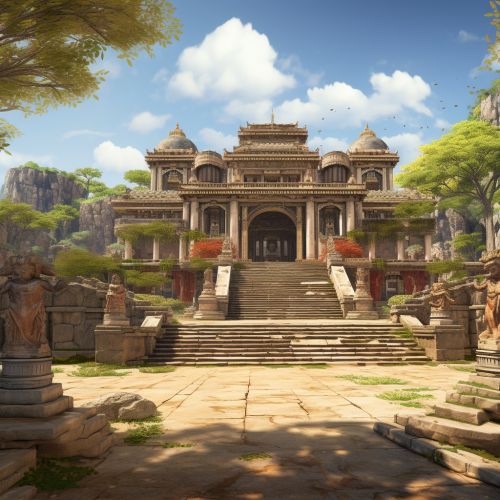Cultural Heritage Management
Introduction
Cultural Heritage Management (CHM) is a professional discipline that involves the preservation, protection, and interpretation of cultural heritage. It is a multidisciplinary field that incorporates aspects of archaeology, anthropology, history, architecture, and conservation science. The primary objective of CHM is to balance the needs of development with the preservation of cultural resources.


Historical Background
The concept of Cultural Heritage Management has its roots in the antiquities laws of various civilizations. The ancient Romans, for instance, had laws concerning the protection of monuments. The modern discipline of CHM, however, began to take shape in the late 19th and early 20th centuries, particularly in response to the increasing threats posed by urbanization and industrialization.
Principles of Cultural Heritage Management
Cultural Heritage Management is guided by several key principles. These include the principles of sustainability, inclusivity, and the use of a values-based approach.
Sustainability
Sustainability in CHM refers to the long-term preservation of cultural heritage. This involves ensuring that the management of cultural resources is economically viable, socially equitable, and environmentally friendly.
Inclusivity
Inclusivity in CHM means that all stakeholders, including local communities, indigenous peoples, and other groups with a vested interest in the cultural heritage, are involved in the decision-making process.
Values-Based Approach
A values-based approach to CHM involves identifying, assessing, and managing the values associated with cultural heritage. This approach recognizes that cultural heritage has both tangible and intangible aspects, each with its own set of values.
Practices in Cultural Heritage Management
Cultural Heritage Management involves a range of practices, including heritage impact assessments, conservation planning, and community engagement.
Heritage Impact Assessments
Heritage Impact Assessments (HIAs) are studies conducted to assess the potential impacts of a proposed development on cultural heritage. HIAs are a crucial tool in the management of cultural heritage, as they help to identify potential threats and devise mitigation strategies.
Conservation Planning
Conservation planning involves the development of strategies to preserve and enhance the cultural significance of heritage places. This can involve physical conservation works, interpretation strategies, and management plans.
Community Engagement
Community engagement is a critical aspect of CHM. It involves working with local communities and other stakeholders to ensure that their values and interests are considered in the management of cultural heritage.
Challenges in Cultural Heritage Management
Cultural Heritage Management faces several challenges, including issues related to funding, legislation, and climate change.
Funding
Funding is a significant challenge in CHM. The preservation and management of cultural heritage often require substantial financial resources, which are not always readily available.
Legislation
Legislation is another challenge in CHM. Laws and regulations related to cultural heritage vary widely from one jurisdiction to another, and navigating these legal frameworks can be complex.
Climate Change
Climate change poses a significant threat to cultural heritage. Rising sea levels, increased frequency and intensity of storms, and other climate-related phenomena can cause significant damage to cultural heritage sites.
Future of Cultural Heritage Management
The future of Cultural Heritage Management will likely involve increased use of technology, greater emphasis on community involvement, and a more holistic approach to heritage management.
